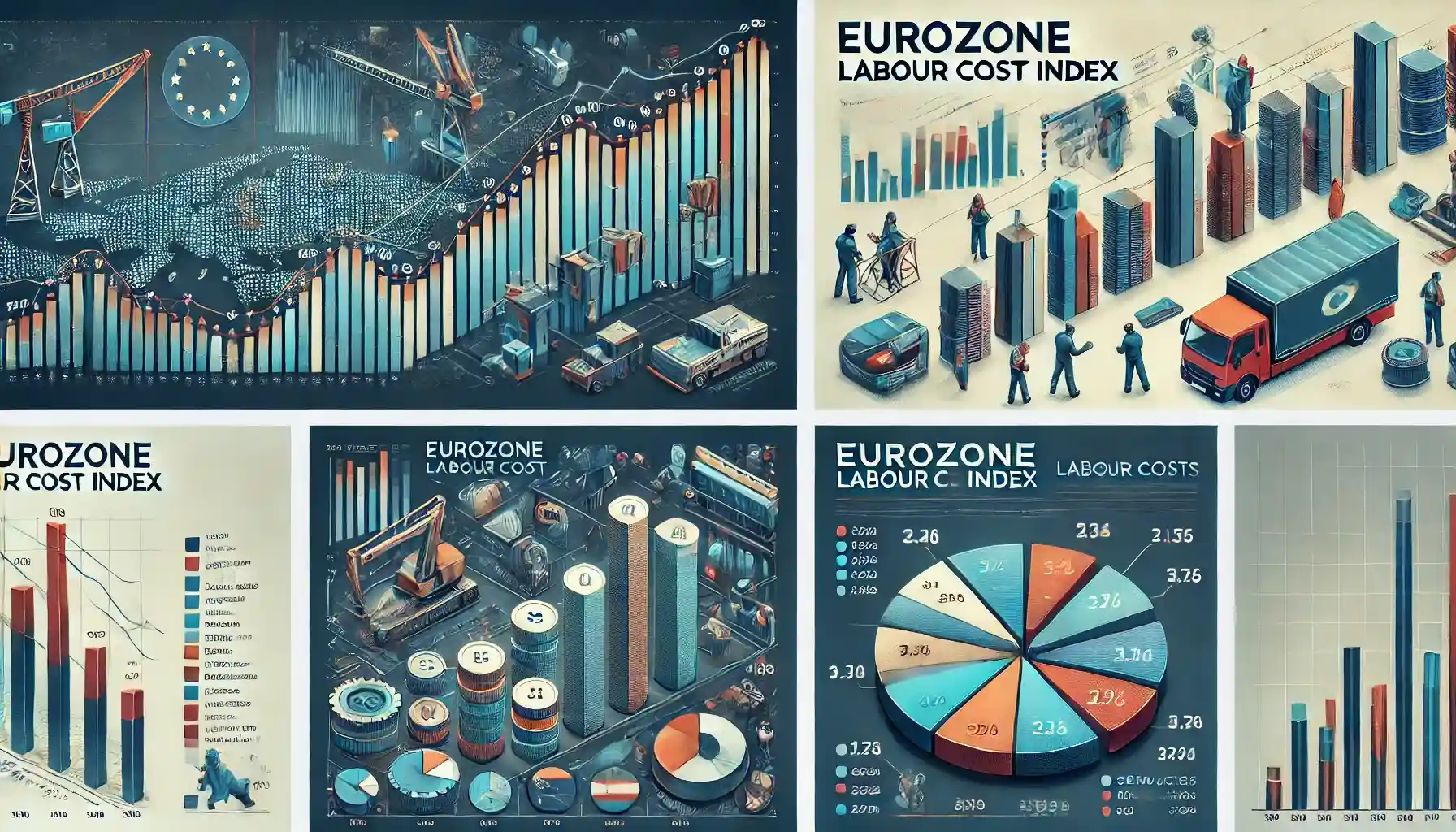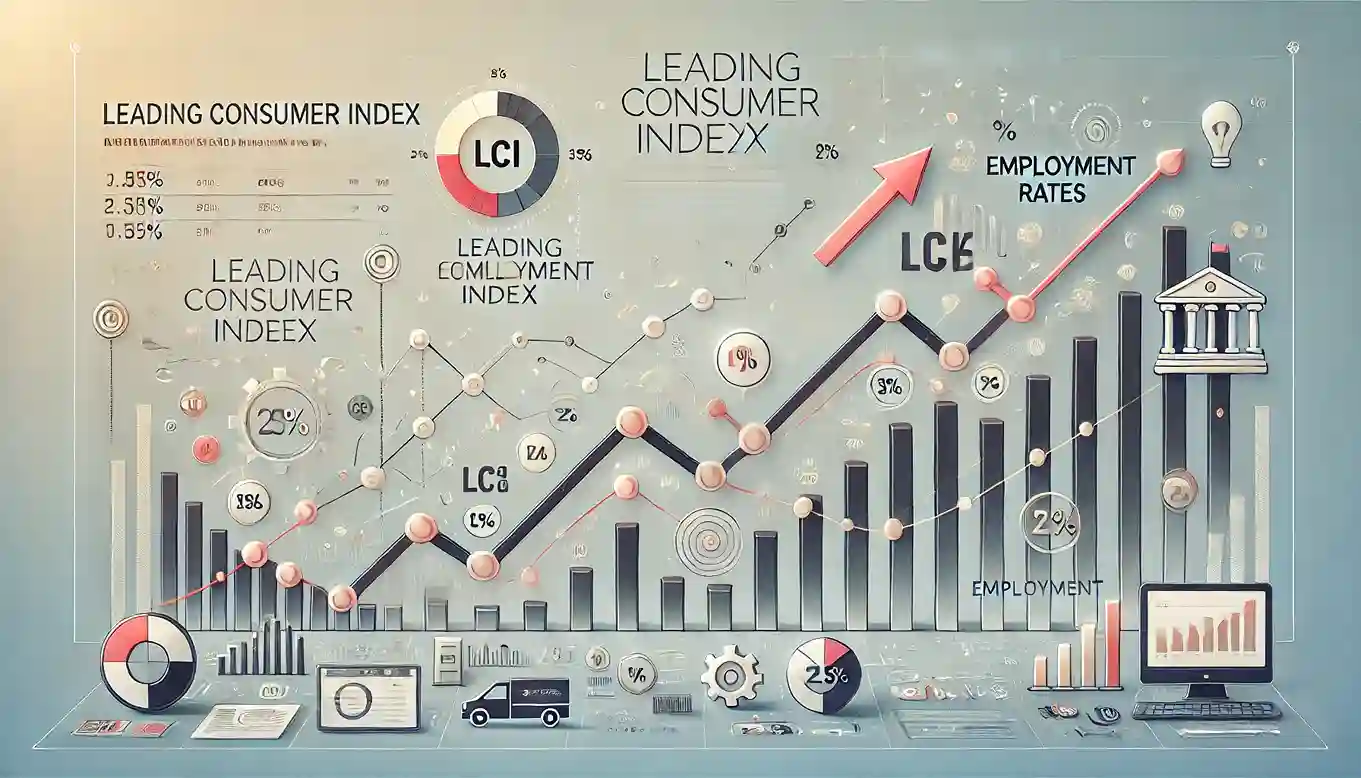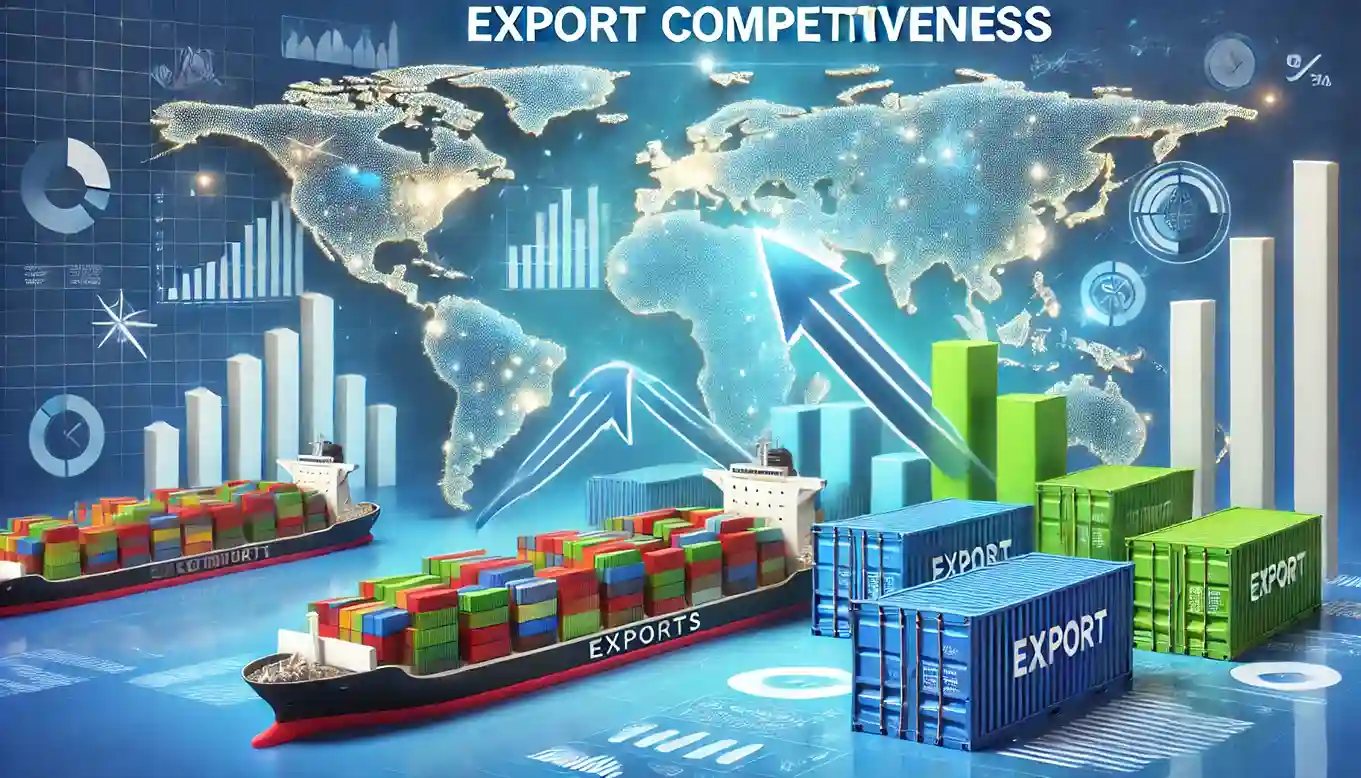When it comes to forex trading, keeping an eye on economic indicators is vital. One such essential indicator is the Eurozone Labour Cost Index (LCI). This index provides valuable insights into the cost of labor, which can significantly impact currency values. In this comprehensive guide, we’ll delve into what the Eurozone Labour Cost Index is, how it affects forex trading, and why it’s crucial for traders to pay attention to this metric.
What is the Eurozone Labour Cost Index (LCI)?
The Eurozone Labour Cost Index (LCI) measures the total cost of labor per hour worked in the Eurozone. This includes wages and salaries, as well as non-wage costs such as social security contributions paid by employers. The LCI is a critical economic indicator that reflects the overall cost of labor in the Eurozone, providing insights into the region’s economic health.
Components of the Labour Cost Index
The LCI is composed of several elements. Firstly, it includes wages and salaries, which are the direct payments made to employees for their work. Secondly, it encompasses non-wage costs, which can include social security contributions, taxes, and other benefits that employers provide to their employees. By analyzing these components, traders can gain a comprehensive understanding of labor cost trends in the Eurozone.
Frequency and Publication of the LCI
The Eurozone Labour Cost Index is published quarterly by Eurostat, the statistical office of the European Union. This regular release schedule allows traders to track labor cost trends over time, providing them with up-to-date information to inform their trading strategies.
Importance of the LCI for Forex Traders
For forex traders, the LCI is a valuable tool for understanding the economic conditions of the Eurozone. Changes in labor costs can indicate shifts in economic stability, inflationary pressures, and overall economic health, all of which can impact currency values.
Impact on Currency Values
When labor costs rise, it can lead to higher inflation. Higher inflation can erode the value of a currency because it reduces purchasing power. Conversely, stable or declining labor costs can signal economic stability, which can be favorable for a currency. By monitoring the LCI, traders can anticipate potential currency movements and adjust their trading strategies accordingly.
Correlation with Other Economic Indicators
The LCI is closely linked to other economic indicators such as GDP growth, unemployment rates, and inflation. Understanding these correlations can provide traders with a more comprehensive view of the Eurozone’s economic landscape. For instance, rising labor costs might coincide with increased consumer spending and economic growth, offering traders additional context for their analyses.
How to Interpret the LCI
Interpreting the LCI involves looking at both the level and the trend of labor costs. A rising LCI indicates increasing labor costs, which could signal inflationary pressures. On the other hand, a stable or declining LCI suggests that labor costs are under control, potentially indicating economic stability.
Year-on-Year and Quarter-on-Quarter Comparisons
Traders should consider both year-on-year and quarter-on-quarter comparisons when analyzing the LCI. Year-on-year comparisons can reveal long-term trends, while quarter-on-quarter comparisons can highlight more immediate changes. By examining both, traders can get a fuller picture of labor cost dynamics.
Sector-Specific Analysis
Labor costs can vary significantly across different sectors. For example, labor costs in the manufacturing sector might differ from those in the service sector. By analyzing sector-specific data, traders can identify which parts of the economy are experiencing the most significant changes in labor costs, allowing for more targeted trading strategies.
The Relationship Between LCI and Inflation
Inflation is a key concern for forex traders, and the LCI can provide early warning signs of inflationary pressures. When labor costs rise, employers might pass on these costs to consumers in the form of higher prices, leading to inflation.
Wage-Price Spiral
One potential outcome of rising labor costs is the wage-price spiral. This occurs when higher wages lead to higher prices, which in turn lead to demands for even higher wages. This cycle can create sustained inflationary pressures, affecting the value of the currency.
Central Bank Responses
Central banks, such as the European Central Bank (ECB), closely monitor labor costs as part of their inflation assessments. If the LCI indicates rising labor costs and potential inflation, the ECB might consider tightening monetary policy, such as raising interest rates. Such actions can impact currency values, making the LCI a crucial indicator for traders to watch.
LCI and Economic Growth
Labor costs also have a direct impact on economic growth. When labor costs are moderate and stable, businesses can invest more in expansion and hiring, contributing to economic growth. Conversely, rapidly rising labor costs can squeeze profit margins and reduce investment, potentially slowing economic growth.
Productivity and Competitiveness
Productivity is another crucial factor in the relationship between labor costs and economic growth. If labor costs rise faster than productivity, it can reduce the competitiveness of Eurozone businesses in the global market. This, in turn, can affect the overall economic performance and the value of the euro.
Investment Decisions
For forex traders, understanding how labor costs impact business investment decisions is vital. High labor costs can deter investment, leading to slower economic growth and potentially weakening the currency. By keeping an eye on the LCI, traders can gain insights into future economic performance and make more informed trading decisions.
LCI and Employment Rates
The relationship between labor costs and employment rates is complex. While rising labor costs can lead to higher wages and better living standards, they can also result in higher unemployment if businesses cut back on hiring to manage costs.
Employment Trends
By analyzing the LCI alongside employment data, traders can identify trends that might impact the currency market. For example, if rising labor costs are accompanied by increasing unemployment, it could signal economic trouble, potentially leading to a weaker euro.
Wage Growth vs. Employment Growth
Striking the right balance between wage growth and employment growth is crucial for economic stability. Traders should monitor both aspects to gauge the overall health of the labor market and its potential impact on the forex market.
LCI and Business Sentiment
Business sentiment is another area where the LCI can provide valuable insights. Rising labor costs can affect business confidence, influencing investment decisions and economic outlook.
Surveys and Reports
Surveys and reports on business sentiment often reflect concerns about labor costs. By correlating these reports with the LCI, traders can get a sense of how businesses are responding to changes in labor costs and what this might mean for future economic performance.
Market Reactions
Market reactions to business sentiment reports can also be significant. Negative sentiment due to rising labor costs can lead to market volatility, affecting currency values. Traders who are attuned to these dynamics can better navigate the forex market.
LCI and Consumer Spending
Consumer spending is a major driver of economic growth, and labor costs can have a direct impact on consumer behavior. Higher labor costs can lead to higher wages, increasing disposable income and boosting consumer spending.
Disposable Income
When analyzing the LCI, traders should consider its impact on disposable income. Higher wages can lead to increased spending on goods and services, stimulating economic growth. This, in turn, can strengthen the currency.
Inflationary Pressures
However, if rising labor costs lead to higher prices, the inflationary pressures can offset the benefits of increased disposable income. Traders need to balance these factors when assessing the potential impact of the LCI on the forex market.
LCI and Trade Balance
The trade balance is another critical aspect of the economy that can be influenced by labor costs. Changes in labor costs can affect the competitiveness of Eurozone exports, impacting the trade balance and, consequently, the currency value.
Export Competitiveness
Higher labor costs can make Eurozone goods more expensive on the global market, potentially reducing export competitiveness. This can lead to a worsening trade balance, putting downward pressure on the euro.
Import Costs
Conversely, if higher labor costs are accompanied by increased productivity, it can offset some of the negative impacts on export competitiveness. Additionally, traders should consider how changes in labor costs might affect import prices and overall trade dynamics.
LCI and Policy Implications
Government and central bank policies are heavily influenced by labor cost trends. Policymakers use the LCI to assess the need for interventions to control inflation, stimulate growth, or address labor market issues.
Monetary Policy
The European Central Bank (ECB) closely monitors the LCI as part of its monetary policy framework. Rising labor costs can lead to tighter monetary policy, such as interest rate hikes, to curb inflation. Such policy changes can have significant implications for the forex market.
Fiscal Policy
Fiscal policies, including government spending and taxation, can also be influenced by labor cost trends. Governments might implement measures to support businesses and workers if labor costs are rising rapidly. Understanding these policy responses can help traders anticipate potential market movements.
Global Comparisons
Comparing the Eurozone LCI with labor cost indices from other major economies can provide additional insights for traders. These comparisons can highlight relative cost advantages or disadvantages, influencing currency values and trade flows.
US Labor Cost Index
The US labor cost index provides a useful benchmark for comparing Eurozone labor costs. Differences in labor cost trends between the Eurozone and the US can impact the EUR/USD currency pair, offering trading opportunities.
Emerging Markets
Labor cost trends in emerging markets can also affect the Eurozone’s competitive position. Traders should consider how changes in labor costs in countries like China and India might influence the Eurozone’s economic outlook and currency value.
Practical Trading Strategies Using the LCI
Understanding the LCI’s impact on the forex market can help traders develop effective trading strategies. By incorporating labor cost trends into their analyses, traders can make more informed decisions and improve their chances of success.
Trend Analysis
One approach is to use trend analysis to identify long-term labor cost trends. By tracking changes in the LCI over time, traders can anticipate potential currency movements and adjust their positions accordingly.
Event-Driven Trading
Event-driven trading strategies can also be effective. For instance, traders can look for significant changes in the LCI and position themselves to take advantage of the resulting market movements. This might involve trading around the release of the LCI or reacting to unexpected changes in labor cost trends.
Conclusion
The Eurozone Labour Cost Index is a vital economic indicator for forex traders. By understanding what the LCI measures and how it impacts the economy and currency values, traders can gain valuable insights to inform their trading strategies. Whether it’s anticipating inflationary pressures, assessing economic growth, or analyzing trade dynamics, the LCI provides crucial data that can help traders navigate the complex forex market. By staying attuned to labor cost trends and incorporating this information into their trading strategies, forex traders can enhance their decision-making processes and improve their overall performance in the market.
FAQs
1. How often is the Eurozone Labour Cost Index published?
The Eurozone Labour Cost Index is published quarterly by Eurostat, providing regular updates on labor cost trends.
2. What components make up the Labour Cost Index?
The LCI includes wages and salaries as well as non-wage costs such as social security contributions paid by employers.
3. How does the LCI affect currency values?
Rising labor costs can lead to higher inflation, which can weaken the currency. Conversely, stable or declining labor costs can signal economic stability, potentially strengthening the currency.
4. Can the LCI be used to predict central bank policy changes?
Yes, central banks like the European Central Bank monitor the LCI to assess inflationary pressures. Significant changes in labor costs can influence monetary policy decisions, such as interest rate adjustments.
5. How can traders incorporate the LCI into their trading strategies?
Traders can use trend analysis and event-driven strategies to anticipate and react to changes in the LCI. By understanding labor cost trends, traders can make more informed decisions and improve their trading performance.








